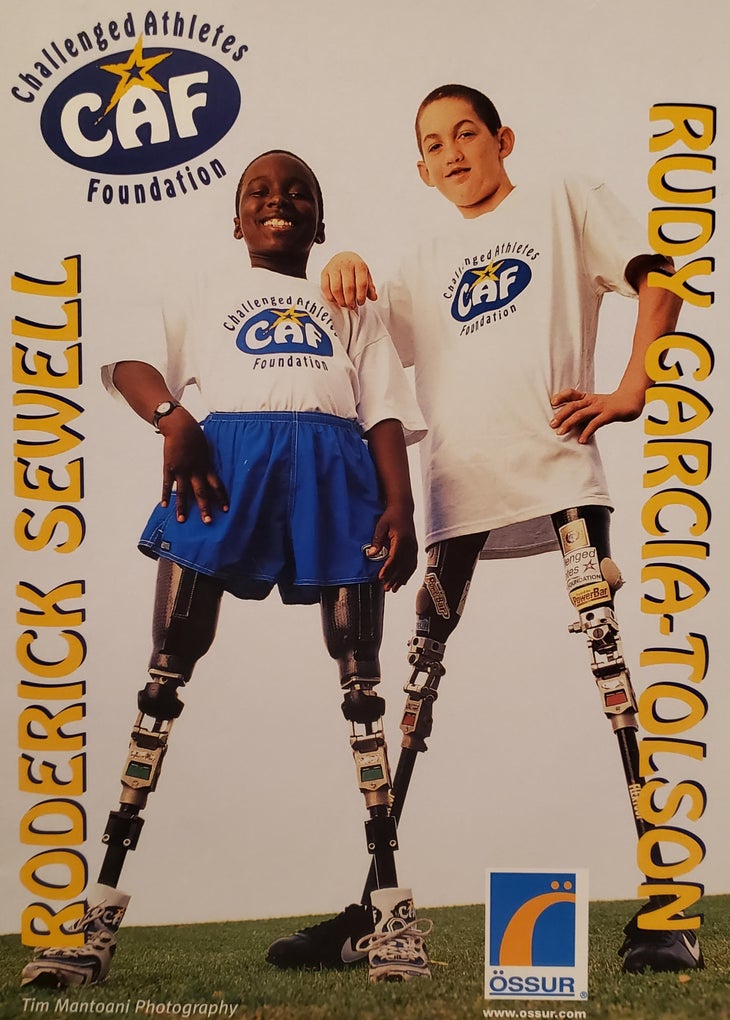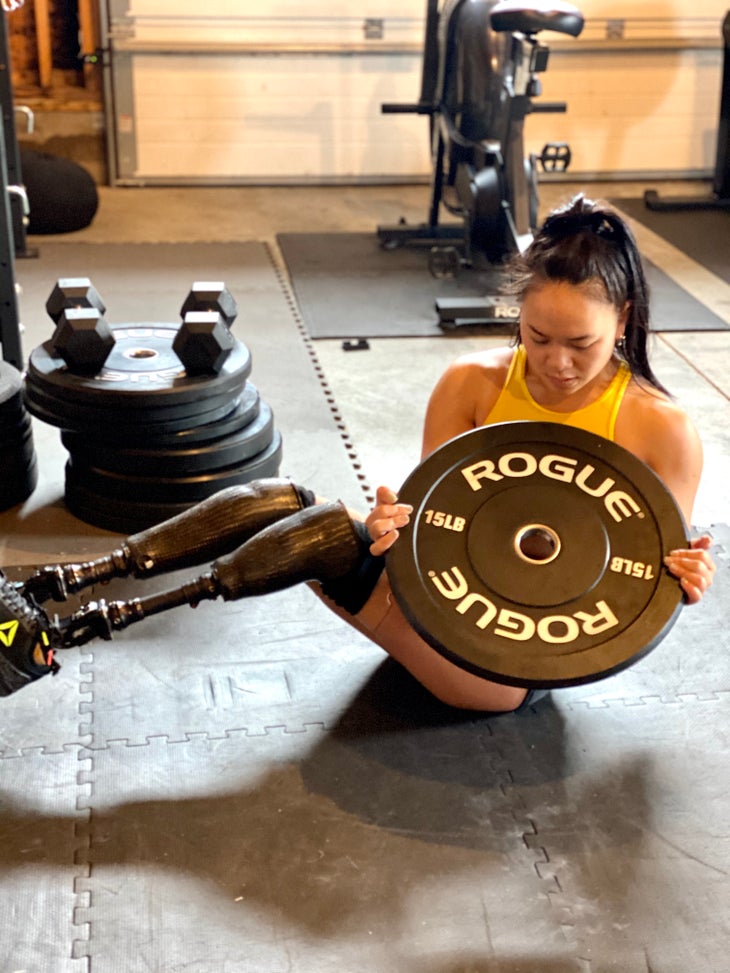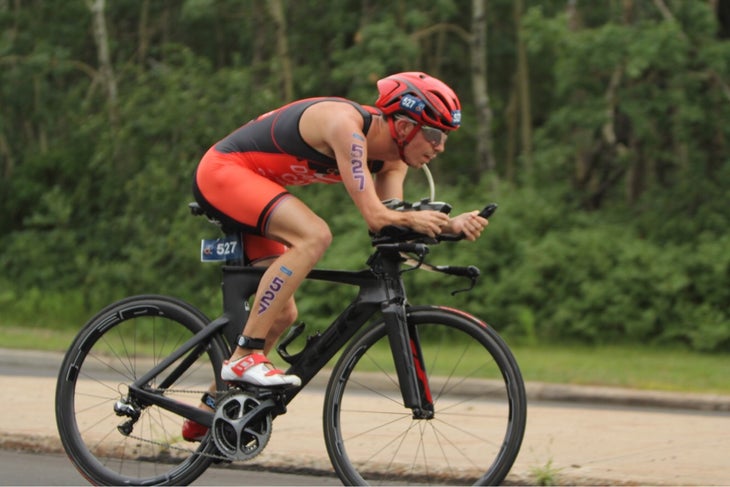New perk! Get after it with local recommendations just for you. Discover nearby events, routes out your door, and hidden gems when you sign up for the Local Running Drop.
In 1989, Jim MacLaren—a below-knee amputee—finished the Ironman World Championship race in Kona in 10:42 and ran a 3:16 marathon. With his performances, he became known for “kicking able-bodied butts,” said Bob Babbitt, a friend of MacLaren’s who later went on to co-found the Challenged Athletes Foundation (CAF).
At the time, not many people with disabilities participated in triathlon—so few could afford the needed equipment. When MacLaren suffered another accident in the early 1990s, hit by a van during a triathlon in Orange County, it prompted Babbitt and two other of MacLaren’s friends to put on a fundraiser and get him that necessary equipment. From there, the Challenged Athletes Foundation was born.
Almost three decades later, the opportunities, support, and respect for para-athletes has changed drastically—but there’s still far to go in terms of appreciating these athletes for all their nuance and experiences.

A few years after MacLaren’s striking Kona performance, Rudy Garcia-Tolson was born with pterygium syndrome, which ultimately led to his double above-knee leg amputation and other physical issues. As a kid, Garcia-Tolson said, he was known as “the boy with no legs.” When he began running and competing in races, he was confused why people would compliment and congratulate him: He had come in last!
Those patronizing remarks, though, fueled him to multiple medals over four Paralympics in running and swimming. He went on to become the first double above-knee amputee to complete an Ironman. At one point, he laughed, his competitors even started to view having no legs as an advantage. To him, those complaints were proof that he could compete on the same level.
While it used to be considered charitable to include individuals with disabilities, it’s now seen as necessary, and even an advantage. People now show off their assistive devices, said Babbitt, whereas previous generations would hide them. “It sets people apart in a good way; (they) stand out and I like that,” he said. And for smart advertisers and sponsors, someone who stands out in a crowd can be a boon.
Of course, while athletes like Garcia-Tolson and MacLaren have improved the public perception of para-triathletes, inequalities remain. Para-sports continue to be underrepresented in the media. When they are covered, many athletes are often reduced to objects for inspiration or to symbolize token diversity, missing both the breadth and depth of experiences in the group.
Haven Shephard, 17, is training for her first Paralympics in swimming and is often used to inspire others. Hers is a story of trauma, which she tells matter-of-factly. She has then been asked, ‘Can you tell your story with more feeling?’
“I feel like I disappoint them,” she said. “Some people think I’m too happy.” But to her, “it’s just my life.” Her goal isn’t to inspire others through her existence, but rather her main motivation is simply to explore her own limits in swimming.

Her experience, though, is hers. There are many diverse perspectives and motivations in para-sport. For example, in contrast to Shephard’s exploratory attitude, Stefan Daniel’s motivation is to win. Daniel, 23, was born and raised in Canada and has had bilateral club hands since birth. He won a silver medal in triathlon at the 2016 Paralympic Games, as well as multiple world championships. “Before Rio, a bad workout was life or death; things were super serious,” he said, but he has since learned to keep himself in a more positive mental space—just like any athlete has to work through.
Although they each have unique experiences, all three described additional barriers they faced beyond those shared with able-bodied athletes: less access to role models, low expectations from others, more problem-solving needed from coaches, and more equipment expenses.
Shephard, for instance, started out with a sport she hated—running—since she had only seen people with prosthetic legs doing track and assumed it was her only option. Once she found swimming, she still faced low expectations. Initially her coach thought she would slow down the team, and she was automatically relegated to the “little kid” slow lane at a training camp, her mom said.
There were also challenges for their coaches and in finding a good coaching fit. Because their bodies are significantly different from others, their coaches needed to learn to adapt. For Daniel, it was changing the handlebars on his bike and increasing his work on handling. Garcia-Tolson had to cope with the chafing of his prosthetic legs. And Shephard needed to reconsider the importance of her swim kick.

One of the biggest barriers, though, is the equipment to make all this possible. If triathlon is expensive, paratriathlon is even more expensive—as are other para-sports. Most health insurance companies consider sport equipment nonessential, so those expenses are typically not covered. Combined with these higher expenses, para-athletes have historically been paid less, with 2018 being the first year of equal medal bonuses between Olympic and Paralympic athletes. (A March race in Florida was set to be the first ITU race to feature a pro para-prize purse, but was canceled because of COVID-19.)
The key to overcoming these barriers, all three said, is media coverage. More visibility showcases the unique strengths, challenges, and needs of para-athletes, raises expectations, and highlights role models. It also increases public appreciation, with the support and opportunities that follow. With more media coverage, everyone can appreciate para-athletes as unique individuals and as athletes in their own right.
Paratriathlon classifications
Similar to how heavyweight and lightweight boxers compete in different categories, classification levels in paratriathlon “even the playing ground” so that athletes with similar levels of limitation compete against each other. This classification is based on the assumption that those with the least impairments would be more likely to win; classes and eligibility criteria also vary between sports, since different limitations affect performance differently in different sports.
In triathlon, the classes are:
- PTWC 1-2, for athletes with limitations in their upper and/or lower limbs, respectively, who use a hand cycle for the bike segment and racing chair for the run segment
- PT 2-5, for athletes with limitations in upper and/or lower limbs, who may have bike modifications or prosthetic legs but who do not specifically need a hand cycle or racing chair
- PTVI 1-3, for athletes with varying degrees of vision impairment that significantly limits their performance
- Athletes in PTWC and PTVI compete together in the Pparalympics, with an interval start depending on their classification.
In swimming, the letters indicate the type of stroke: S for freestyle, SB for breaststroke, and SM for medley. The numbers indicate the type of impairment. Swimming parasport classes are determined by stroke and type of impairment: S1-S10, SM1-SM10, and SB1-SB9 for athletes with physical impairments; S/SB11-13 for athletes with vision impairments; and S/SB 14 for athletes with intellectual impairments such as difficulties with patterns, sequencing, memory, and reaction time. Classes for athletics (Track and Field) use T for track and jump events, and F for throws, while the number describes the type of impairment related to the specific event.
More information about the parasport classes can be found at www.paralympic.org.